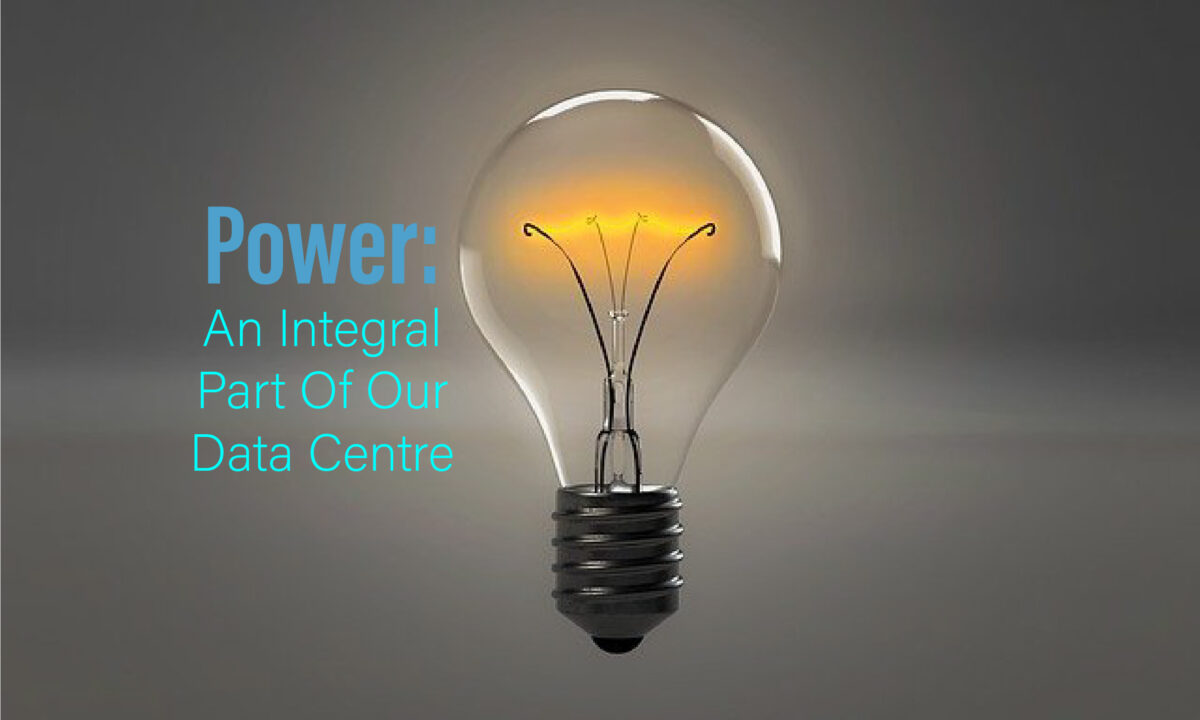As obvious as it sounds, power is a critical part of a data centre. Basically, data centres rely on power for just about everything they do. No power, no data! It really is like anything else that requires electricity. To ensure that everything runs smoothly at all times in a data centre, the System Administrators need to ensure that all critical equipment within the data centre has a steady supply of constant electricity on a consistent basis – all without running up the monthly electricity bills of course!
The majority of data centres get their power from their local electrical grid. The facility will then have a few transformers in place to take in all the energy, making sure that the power being distributed is the right voltage and also the right type of current.
As the power enters the building it is routed through an ATS (Automatic Transfer Switch). The ATS controls where the source of the power is. Most of the time this will be from the national grid. However, during a power outage, the ATS will detect there is no power coming from the national grid and send a signal to the generator. Once the generator is up to speed and is able to meet the power demand that is required. The ATS will change the power input from the grid to the Generator.
The power from either the National Grid or Generator is then routed through a UPS (Uninterruptible Power Supply). This harmonises the electricity by adjusting for surges/drops in the supply. Servers are very sensitive to any fluctuations in power which can cause damage to equipment.
A UPS system will have a battery bank attached to it. As power runs through the UPS this battery bank remains fully charged. In the event of a power outage, the UPS serves as an initial backup for power. A typical UPS may provide in the regions of 5-10 minutes of run time. UPS systems are not designed to power Data Centres for any longer periods of time. The purpose of a UPS is to ensure there is no drop in power during an outage and allow the required time for a generator to reach the required capacity to provide power. A generator is designed to provide power for an indefinite length of time or until power is restored.
Power from the UPS is then routed to large circuit breakers known as MCCBs (moulded case circuit breakers). These are high capacity circuit breakers designed to handle large amounts of power. These MCCBs feed the power to a number of distribution boards which may be similar to those you would normally find in a large office building. These distribution boards will have up to 36 MCBs (miniature circuit breakers). Each MCB would feed power to a rack PDU (power distribution unit). Think of this like an industrial extension lead where up to 22 servers will connect into. PDUs allow Data Centres to measure and monitor the power consumption of the connected devices and perform remote reboots when needed.
How much energy do data centres use?
An immense amount of power is needed to keep a data centre running smoothly and efficiently. According to a recent report, the entire global data centre community uses over 90 billion kilowatt-hours of electricity yearly – that’s a lot of electricity! To put that into perspective, that is roughly the equivalent of 34 coal-powered power plants. On a global scale, 3 percent of all electricity used across the globe goes to data centres.
There are a couple of reasons why data centres use this much power. Not only do servers and other crucial bits of IT equipment require a lot of power to function, a lot of power is consumed by CRAC (computer room air conditioning) units. As dictated by the first law of thermodynamics (also known as the law of conservation of energy) “energy cannot be created or destroyed, it can only be transferred from one form to another”. In short, the majority of the power consumed by servers is eventually released as heat into the Data Centre. Adequate cooling is therefore essential to ensure the data centre runs as smoothly as possible.
To determine how much electricity gets single-handedly fed into servers and nothing else, facilities measure power input through a Power Usage Facility (PUE) score. Basically, a score of 1 means that every single morsel of energy is being inputted into the servers, whereas a score of two means that the auxiliary equipment uses just as much energy within the data centre as servers. According to a recent survey, the average PUE for a data centre is 1.58, this has been declining since 2007 due to large improvements in Data Centre design and improvements in cooling efficiency of CRAC units.
As a data centre operator, we recognise that we need to do our bit towards reducing energy consumption. In an effort to make our data centre greener we are working towards our goal of being carbon neutral by 2023 by a combination of lowering our carbon footprint and carbon offsetting. As an example of this, we recently made made a significant investment in replacing our older CRAC units for more efficient ones that use less energy.So there you have it, a breakdown of why power is so important in a data centre. Whether it be for the servers or just simple aspects of the data centre like lights, data centres would not be able to work without a mammoth amount of power. Now, on to our company. Are you interested in hosting with us or just want a little bit more info on what we do? Visit our website or contact 0161 464 6101 or email hello@datacentreplus.co.uk!


